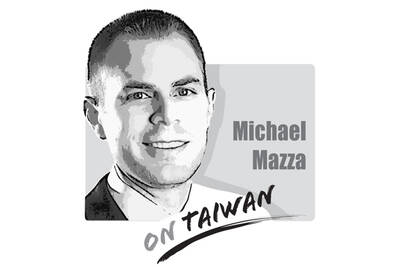While human rights organizations often focus on Beijing's repression of Tibetans and rights advocates throughout China, one group of people, the Uyghurs, has not received the attention a plight of their magnitude should warrant.
This could, in part, be the result of Uyghurs being concentrated in Xinjiang, whose remoteness makes reporting on the situation there more onerous. Beijing's cynical exploitation of the US-led "war on terrorism" since Sept. 11, 2001, as it represses this Muslim minority is also part of the reason why their suffering remains largely unknown. Readers may recall Huseyin Celil, the Canadian Uyghur who in April was sentenced to life in prison for alleged "terrorist activities." Celil, sadly, still languishes in jail and Ottawa has grown conspicuously silent on the matter. In the past six years, more than 3,000 Uyghurs have been arrested on similar charges.
Last week, Nobel Peace Prize nominee Rebiya Kadeer, who lives in exile in the US after spending five years in prison for defending Uyghur rights (or, as Chinese Foreign Ministry spokesman Qin Gang (
Meanwhile, in an Oct. 18 letter to the National People's Congress, Amnesty International called on Chinese authorities to end a practice known as reeducation through labor (RTL). Amnesty reports that hundreds of thousands of Chinese have been affected by RTL, which can be imposed for "crimes" -- such as criticizing the government or following banned beliefs -- that are not considered serious enough to be punishable by criminal law.
While no one has so far come out and put two and two together, the uprooting of hundreds of thousands of women from a specific ethnic group and religious belief bears all the hallmarks of the RTL policy and promises to be as devastating to Uyghur communities as the reeducation program during the Cultural Revolution was for the educated classes. The removal of 240,000 women of reproductive age (most of them are believed to be between 16 and 25 years old) from a population of approximately 8.3 million Uyghurs in Xinjiang will have severe implications for the birth rate there.
As was the case during the Cultural Revolution, Beijing hopes the women subjected to forced transfer will marry Chinese from a different background -- in the present case non-Uyghurs/Muslims -- and thereby break the bonds that tie them to their community.
This, however, is only a new rung in Beijing's long history of trying to erase Uyghur identity. Starting in 1990, China began promoting mixed marriages in Xinjiang, offering Uyghurs better social benefits if they married non-Uyghur Chinese and, conversely, 3,000 yuan (US$402) stipends for Han Chinese marrying Uyghurs. Birth control, forced abortion and sterilization (which the People's Daily claimed in 2001 was "voluntary") have also been reported.
The ramifications of such practices on the social cohesion of Uyghurs have yet to be fully understood, but it is clear they represent an attempt to assimilate the ethnic minority, with the long-term objective of watering down, if not altogether eradicating, its identity. In other words, we are witnessing nothing less than ethnic cleansing. Also, as international conventions define a child as anyone below the age of 18, the forced employment of many Uyghur women is child labor.
Surely all those women cannot be "terrorists." Their only "crime" is being female and belonging to the Uyghur ethnic minority.
The image was oddly quiet. No speeches, no flags, no dramatic announcements — just a Chinese cargo ship cutting through arctic ice and arriving in Britain in October. The Istanbul Bridge completed a journey that once existed only in theory, shaving weeks off traditional shipping routes. On paper, it was a story about efficiency. In strategic terms, it was about timing. Much like politics, arriving early matters. Especially when the route, the rules and the traffic are still undefined. For years, global politics has trained us to watch the loud moments: warships in the Taiwan Strait, sanctions announced at news conferences, leaders trading
The saga of Sarah Dzafce, the disgraced former Miss Finland, is far more significant than a mere beauty pageant controversy. It serves as a potent and painful contemporary lesson in global cultural ethics and the absolute necessity of racial respect. Her public career was instantly pulverized not by a lapse in judgement, but by a deliberate act of racial hostility, the flames of which swiftly encircled the globe. The offensive action was simple, yet profoundly provocative: a 15-second video in which Dzafce performed the infamous “slanted eyes” gesture — a crude, historically loaded caricature of East Asian features used in Western

Is a new foreign partner for Taiwan emerging in the Middle East? Last week, Taiwanese media reported that Deputy Minister of Foreign Affairs Francois Wu (吳志中) secretly visited Israel, a country with whom Taiwan has long shared unofficial relations but which has approached those relations cautiously. In the wake of China’s implicit but clear support for Hamas and Iran in the wake of the October 2023 assault on Israel, Jerusalem’s calculus may be changing. Both small countries facing literal existential threats, Israel and Taiwan have much to gain from closer ties. In his recent op-ed for the Washington Post, President William
A stabbing attack inside and near two busy Taipei MRT stations on Friday evening shocked the nation and made headlines in many foreign and local news media, as such indiscriminate attacks are rare in Taiwan. Four people died, including the 27-year-old suspect, and 11 people sustained injuries. At Taipei Main Station, the suspect threw smoke grenades near two exits and fatally stabbed one person who tried to stop him. He later made his way to Eslite Spectrum Nanxi department store near Zhongshan MRT Station, where he threw more smoke grenades and fatally stabbed a person on a scooter by the roadside.